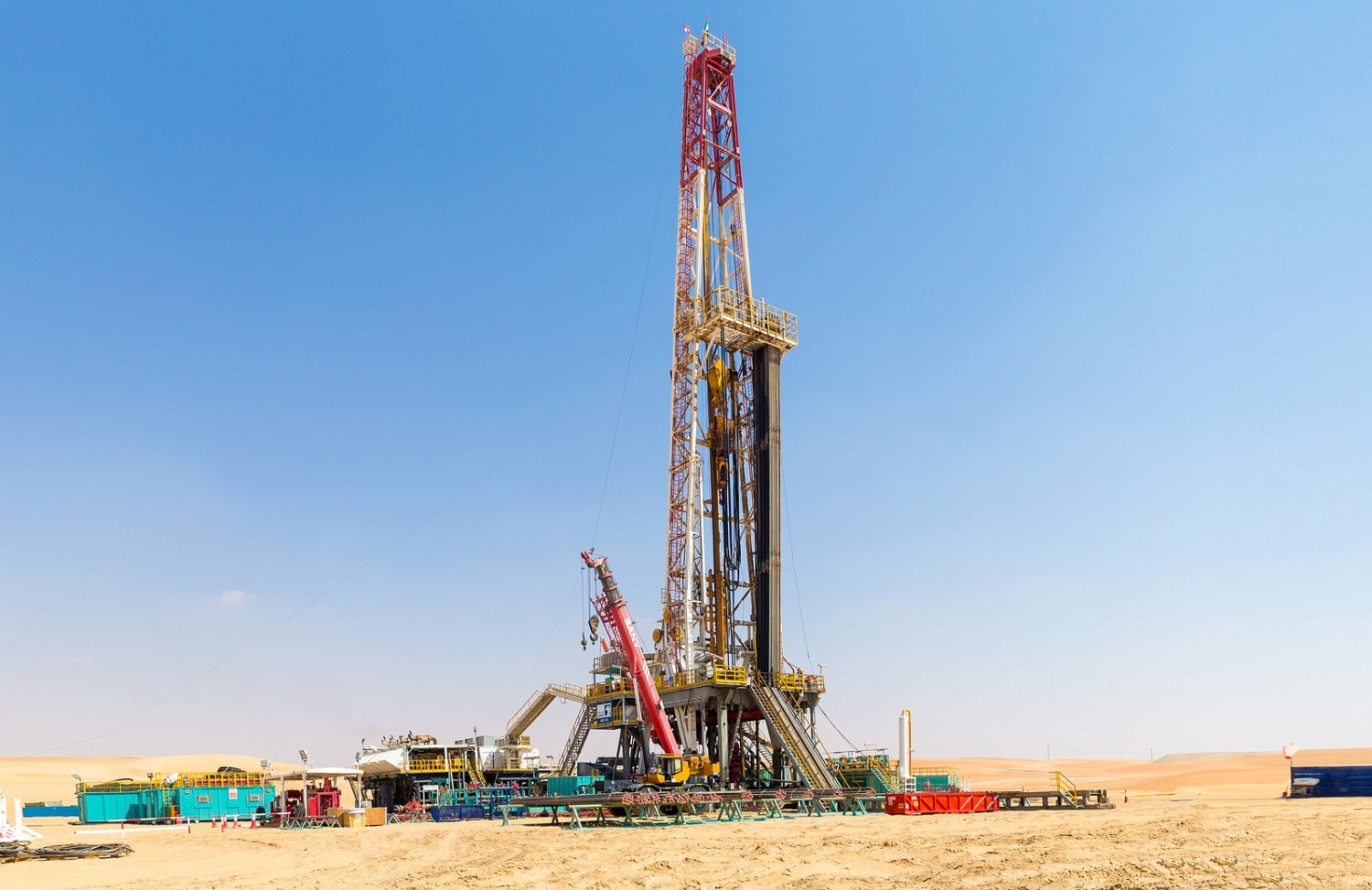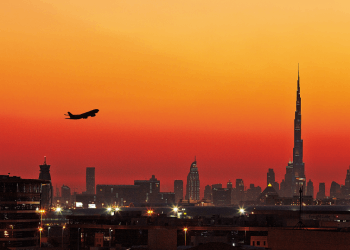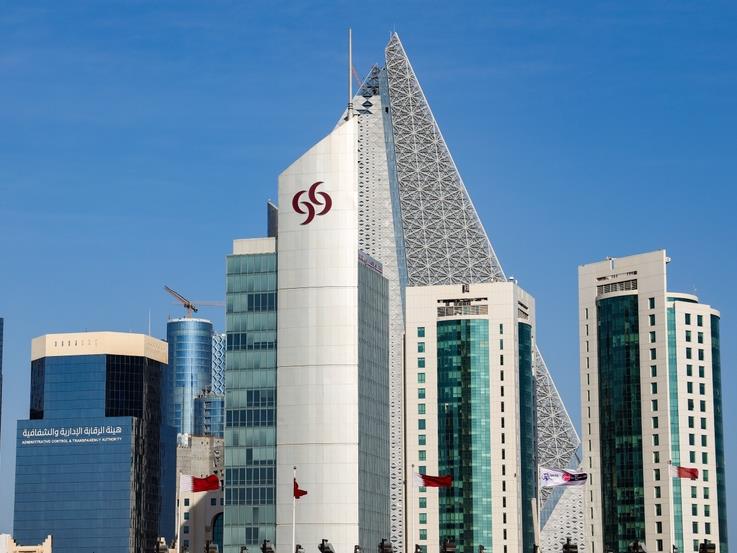Aramco’s recalibrated chemicals goals reflect realism
26 March 2025

Saudi Aramco told consultants and contractors last year that it was revisiting its investment strategy and execution approach for its liquids-to-chemicals programme.
The central ambition of the strategic programme is to derive greater economic value from every barrel of crude produced in Saudi Arabia by converting 4 million barrels a day (b/d) of Aramco’s oil production into high-value petrochemicals and chemicals feedstocks by 2030.
Aramco and its subsidiary, Saudi Basic Industries Corporation (Sabic), had been tasked with establishing 10-11 large mixed-feed crackers by 2030. These petrochemicals crackers, which included greenfield developments and expansions of existing facilities, were to be built both in Saudi Arabia and in overseas markets.
Achieving this ambition required Aramco and Sabic – the main stakeholders in the liquids-to-chemicals programme – to invest a sum of up to $100bn. Amid considerable cost pressures and significant overcapacity in the global chemicals sector, pushing forward with such a capital-intensive campaign was hard to justify.
However, while Aramco may have streamlined the programme’s remit, the primary goal of attaining a liquids-to-chemicals conversion rate of 4 million b/d within its global portfolio remains unchanged.
In a presentation detailing Aramco’s financial performance and operational activities in 2024, president and CEO Amin Nasser stated that the company had achieved 45% of the target of the liquids-to-chemicals programme as of the end of last year. Also, 53% of Aramco’s crude oil production is utilised by the downstream sector.
This has been achieved through “greater capital efficiency with low-equity and a high-placement strategy”, Nasser said in the presentation.
Moreover, large-scale petrochemicals projects undertaken by Aramco’s joint ventures with foreign partners in South Korea and Saudi Arabia, namely the Shaheen and Amiral developments, respectively, will significantly contribute to the liquids-to-chemicals target when they come online in 2026 and 2027.
 Key chemical projects advance
Key chemical projects advance
Aramco continues to make progress with projects deemed crucial to its long-term petrochemicals objectives. One such project is the expansion of Aramco affiliate, Saudi Aramco Jubail Refinery Company (Sasref), into the petrochemicals sector.
Aramco has brought China-based Rongsheng Petrochemical Company on board as a joint-venture partner for the proposed project, which is part of the liquids-to-chemicals programme.
Their aim is to convert the Sasref refining complex in Jubail into an integrated refinery and petrochemicals complex by adding a mixed-feed cracker. The project also involves building an ethane cracker that will draw feedstock from the Sasref refinery.
The project is in the pre-front-end engineering and design (pre-feed) stage, with Aramco previously saying that the construction of large-scale steam crackers and the integration of associated downstream derivatives into the existing Sasref complex would enhance “its ability to meet growing demand for high-quality petrochemical products”.
Meanwhile, Sabic is in the bid evaluation stage with a major project that involves building an integrated blue ammonia and urea manufacturing complex at the existing facility of its affiliate, Sabic Agri-Nutrients Company, in Jubail.
The estimated $3bn project, called the low-carbon hydrogen San 6 complex, is part of Sabic’s Horizon-I low-carbon hydrogen (LCH) programme. Contractors submitted bids for the project in March last year.
The San 6 complex will have an output capacity of 3,500 metric tonnes a day, or 1.17 million tonnes a year (t/y), of blue ammonia, and a urea production capacity of 3,850 metric tonnes a day, or 1.28 million t/y.
Carbon dioxide (CO2) from the blue ammonia plant will be utilised for urea production, with surplus CO2 from the ammonia plant and post-combustion carbon capture unit to be exported via a third-party pipeline for subsequent sequestration.

Gas transportation and processing projects
Saudi Arabia was the biggest regional spender on midstream and downstream projects last year. To address incremental volumes of gas entering the grid as Aramco increases its conventional and unconventional gas production, the state enterprise spent more than $17bn on gas processing and transportation projects in 2024.
In April last year, Aramco awarded $7.7bn in engineering, procurement and construction (EPC) contracts for a project to expand the Fadhili gas plant in the Eastern Province of Saudi Arabia. The project is expected to increase the plant’s processing capacity from 2.5 billion cubic feet a day (cf/d) to up to 4 billion cf/d.
 In June, Aramco awarded 15 lump-sum turnkey contracts for the third expansion phase of the Master Gas System (MGS-3), worth $8.8bn. Then, in August, the company awarded contracts for the remaining two packages of the MGS-3 project, which were worth $1bn.
In June, Aramco awarded 15 lump-sum turnkey contracts for the third expansion phase of the Master Gas System (MGS-3), worth $8.8bn. Then, in August, the company awarded contracts for the remaining two packages of the MGS-3 project, which were worth $1bn.
Saudi Aramco divided EPC works on the MGS-3 project into 17 packages. The first two packages involve upgrading existing gas compression systems and installing new gas compressors. The 15 other packages relate to laying gas transport pipelines at various locations in the kingdom.
The Master Gas System expansion will increase the size of the network and raise its total capacity by an additional 3.15 billion cf/d by 2028, with the installation of about 4,000 kilometres of pipelines and 17 new gas compression trains.
So far this year, the Saudi energy giant has selected the main contractor for a major project to develop a large-scale carbon capture and storage (CCS) hub in Jubail Industrial City.
India’s Larsen & Toubro Energy Hydrocarbon has been picked to perform EPC work on the first phase of the project, which is called the Accelerated Carbon Capture and Sequestration (ACCS) scheme, worth $1.5bn.
The aim of the ACCS scheme, which is expected to have nine phases in total, is to capture CO2 from Aramco’s northern gas plants at Wasit, Fadhili and Khursaniyah, as well as from the operations of Sabic and Saudi industrial gases provider Air Products Qudra.
The first phase of the ACCS project will have the capacity to store and sequester up to 9 million t/y of CO2 in the planned CCS hub in Jubail. The main facility that will be built in Jubail will capture streams from the acid gas enrichment units of the Wasit, Fadhili and Khursaniyah plants. The CO2 will be compressed, dried and fed into the collection pipeline system.
MEED’s April 2025 report on Saudi Arabia also includes:
> UPSTREAM: Saudi oil and gas spending to surpass 2024 level
> POWER: Saudi power sector enters busiest year
> WATER: Saudi water contracts set another annual record
> CONSTRUCTION: Reprioritisation underpins Saudi construction
> TRANSPORT: Riyadh pushes ahead with infrastructure development
> BANKING: Saudi banks work to keep pace with credit expansion
Exclusive from Meed
-
 Kuwait extends deadline for Jurassic oil project
Kuwait extends deadline for Jurassic oil project2 July 2025
-

-
 Turkish Airlines plans further growth
Turkish Airlines plans further growth1 July 2025
-

-

All of this is only 1% of what MEED.com has to offer
Subscribe now and unlock all the 153,671 articles on MEED.com
- All the latest news, data, and market intelligence across MENA at your fingerprints
- First-hand updates and inside information on projects, clients and competitors that matter to you
- 20 years' archive of information, data, and news for you to access at your convenience
- Strategize to succeed and minimise risks with timely analysis of current and future market trends

Related Articles
-
 Kuwait extends deadline for Jurassic oil project
Kuwait extends deadline for Jurassic oil project2 July 2025
State-owned upstream operator Kuwait Oil Company (KOC) has extended the bid deadline for its planned project to develop Jurassic Light Oil (JLO) export facilities and upgrade the existing export network.
The main contract bid submission date for the project, which is understood to have a budget of KD175m ($569m), has been changed to 15 July 2025.
The previous bid deadline was 24 June 2025.
The project was originally tendered in November last year with a bid deadline of 1 December 2024.
Other recent deadlines have included 27 May, 27 April and 6 April.
In an announcement in April this year, the list of prequalified bidders was made up of 15 companies:
- CTCI (Taiwan)
- Daewoo (South Korea)
- Fluor (US)
- Hyundai Engineering & Construction (South Korea)
- Hyundai Engineering Company (South Korea)
- Hyundai Heavy Industries (South Korea)
- JGC Corporation (Japan)
- Larsen & Toubro (India)
- NMDC Energy (UAE)
- Petrofac (UK)
- Saipem (Italy)
- Samsung Engineering Company (South Korea)
- Sinopec Engineering Corporation (China)
- Sinopec Luoyang Engineering Company (China)
- Tecnicas Reunidas (Spain)
In September 2024, KOC made a second announcement about the project, stating that just 13 companies were prequalified.
Both Hyundai Heavy Industries and NMDC Energy had been removed from the list.
At the time, KOC said that companies not included on the list could file a complaint against their non-inclusion before the official invitation to bid on the project.
It is unclear whether more prequalified companies have been added or removed from the list since September.
https://image.digitalinsightresearch.in/uploads/NewsArticle/14179469/main1321.jpg -
 Dubai South real estate faces airport noise concerns
Dubai South real estate faces airport noise concerns1 July 2025
 Commentary
Commentary
Yasir Iqbal
Construction writerThe AED128bn ($35bn) expansion of Al-Maktoum International airport (DWC) in Dubai South has reignited investor interest in the surrounding real estate market since its announcement last year. The scale of the project – set to transform DWC into the world’s largest airport by capacity by 2050 – has created a wave of optimism among developers and buyers alike.
That optimism is already reflected in the numbers. According to a recent report by real estate firm Betterhomes, total property sales in Dubai South reached AED16bn in just the first five months of this year – surpassing the AED15bn recorded in all of 2024.
Property prices in the area have risen by an average of 25% since the airport expansion was announced. Developers have moved swiftly to capitalise on the momentum, and price forecasts are optimistic, pointing to a potential rise in the short term.
However, amid the development buzz lies a critical and often overlooked concern: noise pollution.
With DWC projected to handle 130 million passengers annually by 2032 in its first phase alone, the scale – and the noise – will surpass that of DXB
Airports are indisputable engines of economic growth. They generate employment, boost connectivity and drive commercial development. Yet, for residential areas in close proximity, the long-term impact of aircraft noise can be significant – and detrimental.
Lessons from around Dubai International airport (DXB) offer a cautionary tale. Neighbourhoods such as Mirdiff and Deira, which lie directly under flight paths, frequently experience noise levels exceeding 80 decibels, according to data from Noise Map. These levels are associated with sleep disruption, irritability and even long-term health risks.
With DWC projected to handle 130 million passengers annually by 2032 in its first phase alone, the scale – and the noise – will surpass that of DXB.
Globally, major urban centres have responded to this challenge through strategic urban planning. In London, Heathrow’s surrounding neighbourhoods are tightly regulated with noise contours shaping planning policy. In Paris, Charles de Gaulle Airport is buffered by industrial zones and business parks, while Schiphol in Amsterdam maintains a significant distance between runways and residential districts. These cities offer valuable lessons in balancing airport growth with community wellbeing.
In Dubai South, the conversation is just beginning. Some residents in Emaar South and Dubai South communities have taken to online forums, noting that while current noise levels are tolerable with soundproof windows, this may change significantly once full airport operations commence. One user described the noise as “faint but noticeable”, while another warned: “Once the airport is fully functional, expect a lot of noise and possibly vibrations too.”
To ensure long-term liveability, developers and urban planners must take a proactive approach. Encouragingly, current residential projects in Dubai South have been sited more than 4 kilometres from the DWC runways and, more importantly, outside the direct flight path – mitigating some of the future noise impact.
Whether Dubai South evolves into a thriving, sustainable urban community or a transit-centric logistics zone will depend on how well these environmental factors are addressed. Investment appetite may be high today, but enduring value will require more than just proximity to an airport – it will depend on the quality of life that surrounds it.
https://image.digitalinsightresearch.in/uploads/NewsArticle/14170573/main.png -
 Turkish Airlines plans further growth
Turkish Airlines plans further growth1 July 2025
 This package on UAE-Turkiye relations also includes:
This package on UAE-Turkiye relations also includes:> UAE-Turkiye trade gains momentum
> Turkiye’s Kalyon goes global
> UAE-Turkiye financial links strengthen

With a network covering 30 more countries than its closest competitor, Turkish Airlines has been recognised by Guinness World Records for the most countries flown to by an airline since 2012. “Over the past two decades, Turkish Airlines has experienced rapid expansion, becoming one of the world’s most recognised airlines and the largest carrier in terms of destinations served,” says Erol Senol, vice-president of sales at Turkish Airlines.
The airline’s growth has meant it has become a competitor for the major Gulf carriers such as Emirates, Qatar Airways and Etihad. Senol says the growing aviation market offers opportunities for all carriers.
“The global centre of aviation is moving from the west to the east,” he says.
“This change is advantageous for all regions and carriers, provided there is the commitment to serve more effectively.”
 Extending reach
Extending reachLike the airlines in the Gulf, Turkish Airlines is based in a strategically important geographic location. “Istanbul is within a three-hour flight distance to 78 cities in 41 countries, making it a central hub for connections between Europe, Asia and Africa,” says Senol.
Since 2019, the airline has also been based at one of the world’s largest airports, Istanbul Grand airport (IGA), which has enabled it to continue growing.
“The transition to Istanbul Grand airport has marked a new era for Turkish Airlines, enabling the company to sustain its ambitious growth trajectory,” says Senol.
“Approximately 80% of its capacity is dedicated to Turkish Airlines, offering the airline the operational flexibility and technological support required to manage large-scale passenger and cargo flows.”
The congestion and capacity limitations that previously constrained operations at Ataturk airport were effectively resolved through this relocation.
“Aircraft movement capacity increased from 70 per hour at Ataturk to 80 at the initial stage of Istanbul airport, eventually reaching 120 movements an hour with the commissioning of the third runway. This has significantly reduced aircraft waiting times from 5% to below 1%, improving both punctuality and fuel efficiency,” he adds.
IGA’s larger footprint, which Senol says is “seven times larger than Ataturk airport” has also enhanced passenger services and facilities, helping to improve customer satisfaction and streamline operations.
Turkish Airlines has also increased its annual cargo handling capacity from 1.2 million tons at Ataturk to 2.5 million tonnes at IGA, with projections of reaching 5-6 million tonnes as the airport develops further. “Turkish Airlines has advanced from ninth place in 2018 to third place in 2025 in global air cargo traffic rankings,” says Senol.
Supporting the cargo business is Turkish Cargo’s airport facility, SmartIST, which began operations in February 2022. In 2024, cargo volumes at SmartIST increased by 20% compared to 2023, reaching 1.99 million tonnes. Based on freight tonne kilometres, Turkish Cargo says its market share has reached 5.7%, ranking it third globally. Market share rose to 5.8% in the first quarter of 2025.
A second phase of expansion will further enhance Turkish Cargo’s operations capacity, allowing it to handle up to 4.5 million tonnes annually. The long-term target is to reach 3.9 million tonnes of cargo by 2033.
The relocation of Turkish Airlines’ operations to IGA presented many challenges.
“The relocation project involved extensive pre-planning and meticulous attention to detail,” says Senol.
One of the key challenges was maintaining uninterrupted flight operations during the transition. With real-time monitoring and contingency planning, Turkish Airlines completed the transfer within 33 hours.
The transition to Istanbul Grand airport has marked a new era for Turkish Airlines, enabling the company to sustain its ambitious growth trajectory
Erol Senol, Turkish AirlinesFuture growth
With major airport projects planned at other hubs, Senol offers some advice on how to ensure a seamless transition of operations. “Airlines should invest in full-scale simulations and contingency rehearsals well before the actual move, including load testing IT systems, coordinating logistics and stress-testing operational workflows,” he says.
“Success hinges on strong coordination across departments – operations, IT, cargo, ground services, human resources, safety and more. Turkish Airlines created interdisciplinary task forces and embedded decisionmakers in each operational unit to allow for real-time problem solving during the transition.
“A relocation isn’t just physical – it’s digital,” he notes. “Turkish Airlines used the move to accelerate digital transformation: implementing contactless systems, integrating cargo automation and upgrading passenger services. Airlines should use relocation as a catalyst to modernise infrastructure and adopt scalable technologies.”
Another factor is having room to grow. “Airlines should ensure their new base is not just sufficient, but expandable,” Senol adds.
By 2033, Turkish Airlines aims to serve 171 million passengers across 400 destinations with a fleet of 813 aircraft. “Our strategic plan is built on an annual average growth rate of 7.6%,” he says.
Turkish Airlines currently operates 481 aircraft, comprising 134 wide-body and 347 narrow-body planes. The airline has also placed orders for 355 new Airbus aircraft – 250 A321 Neos and 105 A350s – to support its growth strategy.
https://image.digitalinsightresearch.in/uploads/NewsArticle/14178357/main.gif -
 Qatar records largest local-currency bank bond issuance
Qatar records largest local-currency bank bond issuance1 July 2025
Register for MEED’s 14-day trial access
Qatar-based Commercial Bank has completed a QR500m ($137m) senior unsecured bond sale, marking the largest local-currency issuance by a Qatari bank to date.
The three-year bonds, priced with a 4.9% coupon, were issued under the bank’s Euro Medium Term Note (EMTN) programme. The notes are listed on Euronext Dublin. DBS Bank and Standard Chartered acted as joint lead managers.
The deal attracted strong demand from both regional and international investors, as lenders across the Gulf continue to diversify their funding bases amid high interest rates, Commercial Bank said in a statement.
The issuance comes as Qatar’s domestic debt market gains momentum, with banks seeking to tap liquidity in both riyal and hard currency formats.
Commercial Bank is rated A2 by Moody’s, A– by S&P, and A by Fitch, all with stable outlooks. The lender reported a net profit before tax of QR704.3m for Q1 2025, down from QR801.6m in the same period last year.
https://image.digitalinsightresearch.in/uploads/NewsArticle/14177167/main3557.jpg -
 New Murabba signs MoU for project delivery solutions
New Murabba signs MoU for project delivery solutions1 July 2025
Saudi Arabia’s New Murabba Development Company (NMDC) has signed a memorandum of understanding (MoU) with South Korea’s Naver Cloud Corporation to explore technological solutions for delivering its 14 square-kilometre (sq km) New Murabba downtown project.
New Murabba CEO Michael Dyke signed the agreement earlier this week during the company’s Investment and Partnership Forum in Seoul.
According to an official statement: “The three-year agreement covers exploring innovative technology and automation to support the delivery of New Murabba, including robotics, autonomous vehicles, a smart city platform and digital solutions for monitoring construction progress.”
NMDC is in Seoul to examine technological offerings, assess financing options and showcase the investment opportunities available for the New Murabba downtown development.
The statement added that the excavation works for The Mukaab, the centrepiece of the overall development, have now been completed.
The Mukaab is a Najdi-inspired landmark that will be one of the largest buildings in the world. It will be 400 metres high, 400 metres wide and 400 metres long. Internally, it will have a tower on top of a spiral base and a structure featuring 2 million square metres (sq m) of floor space designated for hospitality. It will feature commercial spaces, cultural and tourist attractions, residential and hotel units, as well as recreational facilities.
Downtown destination
The New Murabba destination will have a total floor area of more than 25 million sq m and feature more than 104,000 residential units, 9,000 hotel rooms and over 980,000 sq m of retail space.
The scheme will include 1.4 million sq m of office space, 620,000 sq m of leisure facilities and 1.8 million sq m of space dedicated to community facilities.
The project will be developed around the concept of sustainability and will include green spaces and walking and cycling paths to promote active lifestyles and community activities.
The living, working and entertainment facilities will be developed within a 15-minute walking radius. The area will use an internal transport system and will be about a 20-minute drive from the airport.
The downtown area will feature a museum, a technology and design university, an immersive, multipurpose theatre, and more than 80 entertainment and cultural venues.
https://image.digitalinsightresearch.in/uploads/NewsArticle/14177612/main.jpg

